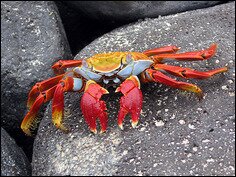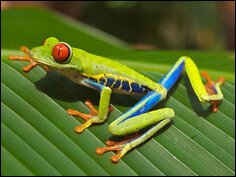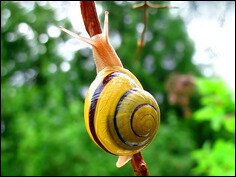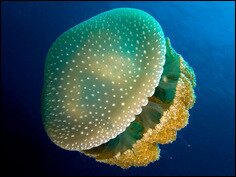What Do Mammals Eat?
Current Category: Mammals.
Mammals eat pretty much everything, apart from leaf detritus and mature tree wood. We’re looking at the four main types of mammalian diets; carnivore (eat meat), herbivore (eat plants), frugivore (eat fruits) and omnivore (a bit of everything). Carnivores will eat the odd fruit and vegetable, as well as the occasional insect, and herbivores might scoff the odd insect or small vertebrate.
 Two giraffes fighting (Giraffa camelopardalis). Photo by Luca Galuzzi – www.galuzzi.it.
Two giraffes fighting (Giraffa camelopardalis). Photo by Luca Galuzzi – www.galuzzi.it.
Wild animals are generally opportunists
Most wild animals are opportunists and will try anything, especially if times are hard, due to bad weather or pregnancy. The diet of a particular species might change throughout its lifetime and this is most noticeable in the omnivorous groups.
Picky eaters
Animals change their diets because they have to be ready for seasonal changes in availability. There are a few animals that have a very narrow diet, like three-toed sloths which only eat the leaves of two types of trees, and the koala, which eats only a few types of eucalyptus leaf. Anteaters are also a good example. These foods are plentiful enough to be reliable.
 African bush elephant (Loxodonta africana). Photo by .
African bush elephant (Loxodonta africana). Photo by .
Herbivores
Most mammals are herbivores, in fact pound for pound, most of the mammals on the planet eat only plants. Plant matter is mainly cellulose and water, with some soluble carbohydrates, but not much protein or fat. Cellulose is hard to digest, so mammals store microbes in their guts which have the right enzymes to break down cellulose into smaller sugars and carbohydrates. These bacteria also produce fatty acids and vitamins. Many mammals, like cows for example, have compartmentalized stomachs in which the bacteria break down the cellulose.
 Manatee. Photo by Ramos Keith, U.S. Fish and Wildlife Service.
Manatee. Photo by Ramos Keith, U.S. Fish and Wildlife Service.
But not all mammals have them
A lot of herbivores don’t have compartmentalized stomachs, so all the bacterial activity happens in an enlarged colon. These animals, like horses or kangaroos, have very long digestive systems compared to most other mammals of their size. These animals eat leaves, shoots or grass, whereas other herbivores eat seeds and fruits, which are much more nutritious than leaves, containing more fats, proteins and sugars. More than 1,750 types of rodent exist and most of them eat seeds. Fruits are also popular among many groups, like tropical bats and monkeys.
 Bengal tiger (Panthera tigris tigris). Photo by Marc Averette.
Bengal tiger (Panthera tigris tigris). Photo by Marc Averette.
They eat a variety of foods
Many of these mammals will also eat flowers and bark if they need to. Many mammals will also eat fungi. There are also several types of tropical bats that eat only pollen and nectar, using highly evolved tongues.
Ruminants
Ruminants, like cows, chew their food twice or more. The once-chewed and partly fermented food is brought up from the rumen into the mouth and chewed again. It is then passed straight to the second stomach and through the rest of the gut. Ruminants are 25% more efficient at using cellulose than non-ruminants.
 A pod of sperm whales. Photo by Gabriel Barathieu.
A pod of sperm whales. Photo by Gabriel Barathieu.
Carnivores
Carnivorous animals are also common, and some carnivores, like bears and badgers, are omnivorous. Some smaller carnivores are also insectivores, while the big baleen whales feed exclusively on crustaceans. Larger land carnivores eat other mammals and birds, as well as lizards, fish and so on. Many, like hyenas are also scavengers, eating dead or dying animals. Aquatic or marine mammals, like seals, otters and dolphins, go mainly for fish.
 Polar bear (Ursus maritimus) at Wager Bay (Ukkusiksalik National Park, Nunavut, Canada). Photo by Ansgar Walk.
Polar bear (Ursus maritimus) at Wager Bay (Ukkusiksalik National Park, Nunavut, Canada). Photo by Ansgar Walk.
Insectivores
Insectivores, like shrews, aardvarks and smaller bats go for insects, as you’d imagine. Foxes, badgers and skunks will also crunch these critters if need be. Other insectivores, like hedgehogs, moles and so forth, have a very varied diet – earthworms, beetles, flies, butterflies and even bees! It depends mainly on season and availability.
Omnivores
Omnivores are the most flexible group, and are able to live in the widest range of habitats. Mongooses, foxes and rats are omnivores, as are humans! Smaller apes and primates eat seeds, leaves, fruit and insects, as well as birds and their eggs. Some of the larger primates, like the gorilla, are herbivorous, but chimps and humans like to hunt prey animals in packs.
How about diets for other types of mammals?
The list below describes the specific diets for each group of mammals. Some are categorized according to their family order and others are not.
Even-toed ungulate
Ungulate basically means grazers, eats plants like cows. Even-toed is just one group while the other is odd-toed. Even-toed ungulates are very successful and some of them are listed below:
The cat family (Felidae)
The cat family are animals that falls under the Felidae family with the domestic cat being the most familiar. Others are called big cats and some fall under the Panthera genus. Members in the Felidae family are call Felid. Mammals in the Felidae family includes:
- Bobcats
- Cats
- Cheetahs
- Jaguars
- Leopards
- Lions
- Tigers
The dog family (Canidae)
Canidae is a family of dogs or dog-like mammals. Members of this family is call Canid and they include the following mammals:
- Chihuahuas
- Coyotes
- Wolves
- Pit Bulls
Large mammals
The list below describes what are known as large mammals for obvious reasons, they are big and they are mammals.
- Elephants
- Moose
- Reindeer
Marine mammals
Marine mammals are aquatic version of terrestrial mammals. They hunt, eat and breed underwater. These includes the following animals:
- Killer Whales
- Manatees
The bear family (Ursidae)
The bear family is classified under the family Ursidae and they are genetically closer to pinnipeds (seals) than the dog family. They all have shaggy hair, long snouts and stocky legs. Members in the Ursidae family includes the following animals:
- Grizzly Bears
- Pandas
- Polar Bears
The rodent family (Rodentia)
Animals in the Rodentia family are call rodents. They all have one thing in common, a continuously growing pair of incisors on their upper and lower jaws. So, these rodents must keep on eating to keep their teeth short. Members in the rodent family includes:
- Beavers
- Chinchillas
- Chipmunks
- Groundhogs
- Guinea Pigs
- Hamsters
- Porcupines
- Prairie Dogs
- Squirrels
- Mice
Miscellaneous mammals
The following animals don’t fit in other family or groups of animals. So, I might as well call them miscellaneous mammals.
- Armadillos
- Ferrets
- Meerkats
- Orangutans
- Platypuses
- Possums
- Rabbits
- Raccoons
- Sugar Glider
- Weasels
- Zebras
Continue reading: Mammal food chain












